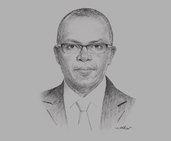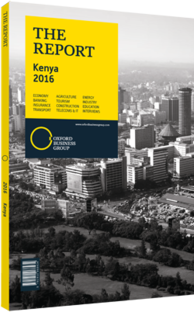Atanas Maina, Managing Director, Kenya Railways: Interview

Interview: Atanas Maina
How would you rate progress on the development of the Standard-Gauge Railway (SGR) project?
ATANAS MAINA: Significant progress has been achieved in a short time. The contract with the engineering, procurement and construction partner was only signed in 2012, and until 2014 we were still working to obtain financing. Just looking at the quantity of money involved, funding was a major challenge, leading to discussions within the country over whether this project was even necessary and if we could afford it, but the truth is that the country and the region desperately need this project. However, given the price tag, there was no way the Kenyan government could fund the entire project. Following several negotiations, we were able to secure financing from the Export-Import Bank of China for 90% of the project, or $294.3bn. The government is funding the balance of $32.7, as well as associated costs, such as land compensation and consulting, through the railway development levy fund. We can safely say the project is now 100% funded.
In terms of progress on the ground, we have obtained 95% of land in the corridor, and we plan to have 100% by Q3 2015 so that work can proceed at full speed. The contractor has already begun earthworks, which should be 60% completed by the end of 2015, putting the project on track to be completed by 2017.
How will the SGR project impact port congestion?
MAINA: The SGR is a regional project intended to ease congestion at the Port of Mombasa (PoM), which is the regional port serving Kenya and nine other countries. The port’s efficiency can be measured by the rate of cargo off-take, which has been a challenge over the past few years. While PoM has continued to handle more cargo, the railway sector has not performed up to expectations in the past two decades. Of the 24m tonnes of cargo handled in 2014, the railway sector was responsible for the off-take of 1m tonnes, meaning that 95% was transported by road, leading to greater congestion, pollution, untold maintenance costs and economic opportunity costs due to the delays that businesses face in obtaining their cargo. It is impossible to quantify the overall economic cost of these inefficiencies and delays.
With the SGR we intend to handle 30% of PoM’s cargo in the first few years of operation, increasing this to 45-50% thereafter. This will create a significant shift in the mode of transport, leading to a reduction in transport expenses, and thus the overall cost of doing business in Kenya and the region. While the global average for transport and logistics costs is 15%, in East Africa it is 45%. There is much room for improvement, and we have the opportunity to make Kenya and the region more competitive if we lower transport costs.
Beyond these reductions in expenses, there are many economic benefits. Thus far about KSh13bn ($143m) has been invested in the corridor and 17,000 Kenyans have been employed. Next year, when the project is at its peak, there will be 30,000 jobs. The direct impact on the economy during construction and operation of the SGR is estimated to be around 1.5% of GDP. In the long term we expect many significant economic multiplier effects for the project. By ensuring adequate and affordable transport of goods all along the corridor, these areas can be made attractive for manufacturers and investors.
What is the potential for commuter rail in Nairobi?
MAINA: The country has not done very well for commuters, and Nairobi commuter rail carries only 30,000 passengers every day. We see the potential to transport three to five times that number. In Nairobi, we are currently planning a commuter rail line that will be harmonised with the city’s mass transit scheme, which will be built around a bus rapid transit system. The challenge that we are currently facing is the financing of these lines, and therefore we are exploring all of our options, including public-private partnership models.
You have reached the limit of premium articles you can view for free.
Choose from the options below to purchase print or digital editions of our Reports. You can also purchase a website subscription giving you unlimited access to all of our Reports online for 12 months.
If you have already purchased this Report or have a website subscription, please login to continue.

